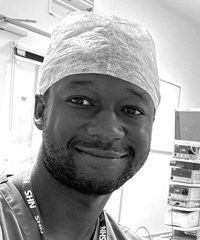ENT features
Electronic nicotine delivery systems (e-cigarettes): what you need to know
As an aid to stopping smoking e-cigarettes may have a role, but they are heavily promoted by industry as a leisure pursuit and desirable fashion accessory. Sneh Biyani and Craig Derkay gives a thorough account of what we know about...
Tonsillectomy in adolescents
Tonsillectomy is one of the most common operations performed across the developed world. Salil Sood and Ray Clarke discuss the special considerations that apply when performing this procedure on adolescent patients. Tonsillitis in teenagers can be exceptionally painful and disruptive....
What does an Olympic medal and surgery have in common?
Competing against female Eastern Bloc athletes in the 1980s was a thankless task, demanding a mulish tenacity in an often futile cause. Ideal preparation for a career in surgery? My path to medicine was unusual, in that I left school...
Medical and surgical management of performing vocalists
Dr Steven Zeitels is widely recognised as the foremost laryngologist of his generation. He has been at the forefront of innovation for 25 years, and has treated innumerable high-profile singers, most recently Sam Smith and Adele. Here, he gives us...
Tone deafness and perfect pitch
If you think you are tone deaf, do not despair. Singing tuition should help but it is probably too late to hope to develop perfect pitch. Consultant otolaryngologist and keen musician, Chris Aldren, discusses the complex and fascinating subject of...
Why is a Raven like a writing desk? Some reflections on countertenors and castrati
The countertenor voice has seen a resurgence in popularity in the last 50 years. Nicholas Clapton is one of the foremost performers and teachers of his generation, and he tells us here about the link between countertenors and the (fortunately...
Vocal cord dysfunction and dysfunctional breathing: an evolving clinical paradigm
Patients frequently present to the ENT department with breathing difficulties. The entity of ‘vocal cord dysfunction’ (also known as paradoxical vocal cord movement, inducible laryngeal obstruction, and many other names) is increasingly well recognised. Ravi Thevasagayam gives us an overview....
Singing after laryngectomy: Shout at Cancer
Thomas Moors is an ENT junior doctor with a background in music and singing. Combining these interests, he has set up a charity to help patients who have had a laryngectomy. He has achieved considerable public attention, and he tells...
The changing spectrum of cancer of the oropharynx: dilemmas and future directions
The association of HPV in oropharyngeal cancer has identified a ‘new disease’, with its unique biologic behaviour, and challenges for clinicians in selecting therapeutic combinations offering maximum efficacy and minimum morbidity or long-term sequela currently under study in clinical trials....
The Airway Intervention Registry (AIR)
Many of our readers will be familiar with conducting endoscopic balloon dilatation procedures. Steven Powell speaks to ENT and Audiology News about the new Airway Intervention Registry which has been set up to collect robust data on the safety and...
Giacomo Puccini’s laryngeal cancer
Giacomo Puccini, one of the best known composers of all time, was diagnosed with laryngeal cancer and died from the disease in 1924. In this article, Rosario Marchese-Ragona and Alessandro Martini describe Puccini’s experience of the disease with quotes from...
Surgical management of sleep disordered breathing
Snoring and sleep-disordered breathing are often described as multi-level problems, and different surgical procedures are required to treat the various sites of airway narrowing and/or collapse. Jonathan Hobson gives us an eloquent run-through the various options available to the ENT...



















